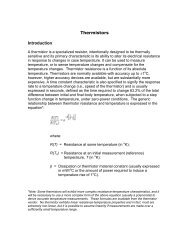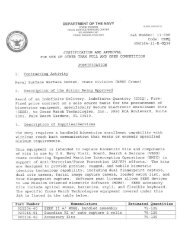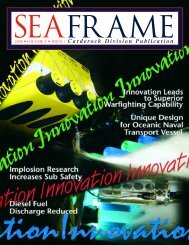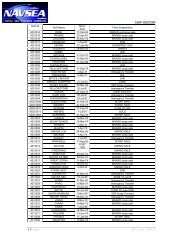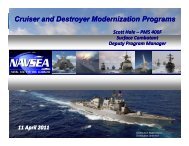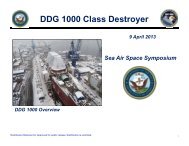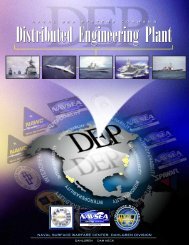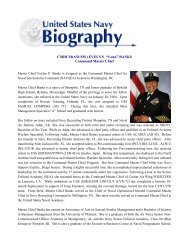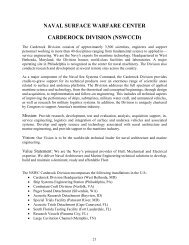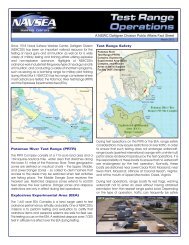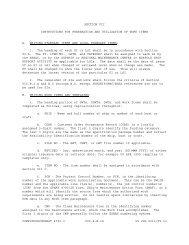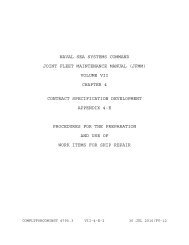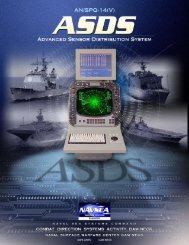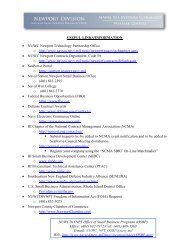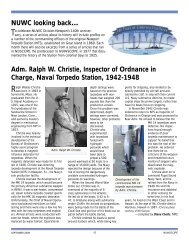Volume 6, Issue 1 - Naval Sea Systems Command - The US Navy
Volume 6, Issue 1 - Naval Sea Systems Command - The US Navy
Volume 6, Issue 1 - Naval Sea Systems Command - The US Navy
You also want an ePaper? Increase the reach of your titles
YUMPU automatically turns print PDFs into web optimized ePapers that Google loves.
SEAFRAME<br />
18<br />
Core equities<br />
RELIABILITy MODELING (Continued from page 17)<br />
generate logistics and manning impacts, and we won’t really<br />
know how much money is saved until all those resultant costs<br />
are rolled together into a final sum.”<br />
This summation of outputs of individual modeling<br />
and simulation tools is viewed by Klingensmith and his team as<br />
unique method of synthesizing tool outputs. It’s unique because<br />
it’s a technique not being used anywhere else in the <strong>Navy</strong> design<br />
community at present. “<strong>The</strong>y’re basically doing point designs,”<br />
says Rick Sheppard, the team lead in reliability modeling. “<strong>The</strong>y<br />
generate a single design and carry it through to determine the<br />
viability of the design based on a small set of parameters. It’s<br />
more cost-effective from a design standpoint to run a design<br />
through these different models together.” Flexibility is greatly<br />
enhanced using the modeling and simulation approach and has<br />
been known to save money in the concept design process.<br />
SEAQUEST<br />
Scope Problem<br />
�<br />
Model �<br />
Sensitivity Analysis and<br />
Trade Space Exploration<br />
�<br />
Optimization<br />
Top: Diagram of the <strong>Systems</strong> Engineering Application<br />
(SEA) process. <strong>The</strong> line diagram shows the steps taken<br />
by the software to quantify reliability in a ship system.<br />
Diagram provided by William R. Sheppard, NSWC Carderock Division.<br />
Above: An example of the Full SEAQUEST model. This particular example depicts the cascading steps used in an<br />
alternative propulsion study. This method is more cost-effective from a design standpoint to process a design<br />
through different models together. Image provided by William R. Sheppard, NSWC Carderock Division.



